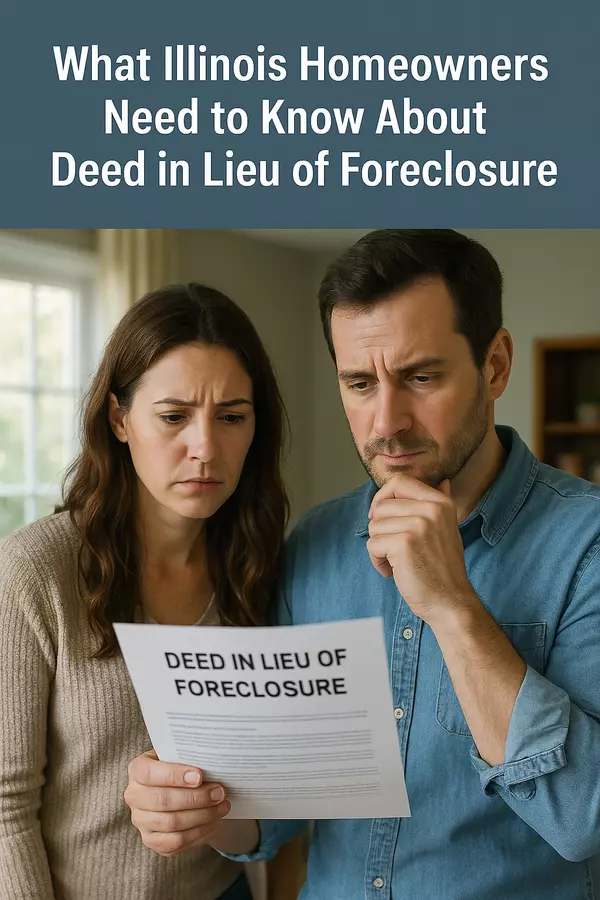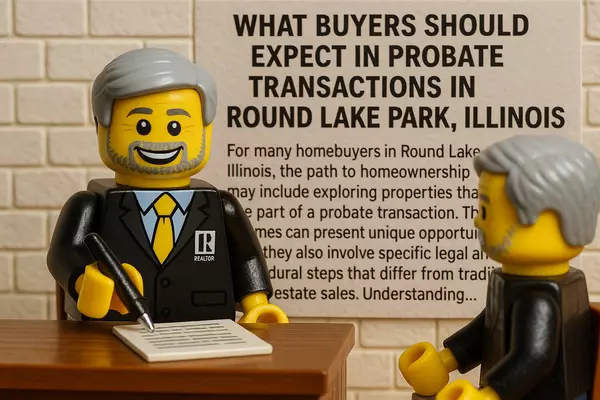Understanding Utility Easements in Lake County, Illinois: What Homeowners Need to Know

Property ownership in Lake County comes with many rights, privileges, and responsibilities. One of the most misunderstood aspects of homeownership—especially for new buyers—is the concept of utility easements. These easements appear on most residential lots throughout Lake County and across Illinois, yet many homeowners don’t fully understand their purpose or the limitations they create.
Whether you're buying, selling, or simply improving your home, knowing how utility easements work can save you time, frustration, and even legal trouble. This guide breaks down what easements are, why they exist, what utility companies are allowed to do, and why you should never build permanent structures on them.
What Is a Utility Easement?
A utility easement is a legally-established right that allows a utility provider—such as the electric company, water district, cable provider, or gas company—to access a specific portion of your property for the installation, maintenance, repair, and replacement of utility infrastructure.
These easements are typically recorded on:
-
Your plat of survey
-
Your property title
-
Subdivision plats filed with Lake County
-
Local municipal engineering documents
In most cases, the easement is located along:
-
Rear lot lines
-
Side lot lines
-
Front yard near the street
-
Utility corridors that connect multiple lots
Although the land is legally yours, the easement grants shared rights to the utility provider for specific purposes.
Why Utility Easements Exist
Utility easements are essential for allowing public and private utility companies to:
-
Deliver electricity, gas, and water
-
Install and maintain sewer and stormwater systems
-
Provide communications services (phone, internet, cable)
-
Protect infrastructure that serves the entire community
Without easements, every maintenance or repair event would require negotiating individual access with hundreds of homeowners—something that would delay service, increase costs, and introduce safety hazards.
In short, easements are a foundational part of a functioning modern community.
What Utility Providers Are Allowed to Do
In Lake County, an easement grants utility providers certain rights to access and work on the easement area. These rights may include:
1. Entering Your Property Without Prior Notice
Utility companies often have legal authority to enter an easement at any time to:
-
Inspect equipment
-
Perform repairs
-
Upgrade infrastructure
-
Install new lines or cables
While many companies provide courtesy notices, they are not always required to do so.
2. Removing Obstacles or Vegetation
If a tree, fence, or landscaping obstructs access to utility lines, the provider may legally:
-
Trim or remove vegetation
-
Remove obstructions
-
Clear the easement area to complete their work
They do not need permission, though they generally take reasonable steps to minimize damage.
3. Excavating or Digging
For underground utilities, companies may need to:
-
Dig trenches
-
Replace damaged lines
-
Install new pipes or cables
Once work is complete, they must restore the area to a reasonable condition, but not necessarily to its prior aesthetic condition.
4. Using Large Equipment
If repairs require trucks or machinery, utilities may:
-
Bring vehicles onto your property
-
Use equipment required to safely access the infrastructure
What Happens if You Deny Access
Legally, you cannot deny a utility provider access to a valid, recorded easement. Attempting to block access can lead to:
1. Legal Action Against You
Providers can obtain a court order to enter the property, and the costs may be charged to the homeowner.
2. Forced Removal of Obstructions
If you refuse access or repeatedly block utility workers, the utility may:
-
Cut locks
-
Dismantle fences
-
Remove landscaping
-
Remove structures
at your expense.
3. Liability Exposure
If your refusal delays emergency repairs—for example, a gas leak, electrical hazard, or water main issue—you may potentially face liability for resulting damages or safety risks.
It is both safer and legally required to allow access.
Why You Should Never Build Permanent Structures on an Easement
Many homeowners don’t realize their backyard shed, deck, patio, fence, or retaining wall is sitting on an easement—until it’s too late.
Permitted vs. Not Permitted
Typically not permitted on easements:
-
Sheds
-
Decks
-
Detached garages
-
Retaining walls
-
Permanent patios
-
Pools
-
Room additions
Generally permitted on some easements:
-
Grass
-
Landscaping (non-structural)
-
Decorative shrubs (not large trees)
-
Fencing (depending on local rules, but can still be removed)
What can happen if you build on an easement?
-
The structure may be removed without compensation
If utilities need to access the area, they may legally remove or demolish any structure in their way. -
You may be responsible for removal costs
If the structure interferes with infrastructure, you—not the utility company—must pay for removal. -
Insurance won’t cover the loss
Because easement violations break zoning and title rules, homeowners insurance typically will not cover removal or damage. -
It can delay or derail a home sale
Buyers, inspectors, and attorneys often flag improperly placed structures, requiring costly fixes before closing.
Benefits of Utility Easements to the Community
While utility easements restrict what homeowners can build in certain areas, they come with significant community-wide benefits:
1. Reliable Access to Essential Services
Easements ensure that electric, gas, water, sewer, and communication systems remain accessible, safe, and functional.
2. Faster Emergency Response
Utility crews can quickly reach problem areas in:
-
Power outages
-
Water breaks
-
Gas leaks
-
Storm damage situations
Access saves time—and sometimes lives.
3. Lower Utility Costs for Everyone
When maintenance is efficient, providers can keep rates lower. Complex access situations increase operating costs, which eventually raise consumer utility rates.
4. Safer Infrastructure
Accessible easements reduce the risk of:
-
Damaged power lines
-
Sewer backups
-
Flooding from blocked drainage
-
Fire hazards from inaccessible gas lines
5. Community Resilience
Lake County frequently experiences:
-
Heavy storms
-
Severe winter conditions
-
Flooding in certain areas
Easements allow quicker repairs and greater reliability during severe weather events.
Final Thoughts: Understanding Your Easements Protects Your Property
Utility easements in Lake County may seem like an inconvenience, but they are essential to safe, efficient, and reliable community infrastructure. Knowing where your easements are and understanding what they allow can:
-
Prevent costly mistakes
-
Avoid legal issues
-
Protect your investment
-
Keep services running smoothly
Before building, planting, or fencing, always review your survey and consult your local municipality or a qualified real estate professional.
Categories
- All Blogs (149)
- Antioch (10)
- Closing Costs (7)
- Community (21)
- Credit (2)
- Divorce (7)
- Estate Sales (1)
- Foreclosure (1)
- Fox Lake (6)
- Grayslake (5)
- Gurnee (4)
- Hainesville (1)
- Homebuyer Tips (50)
- Homeowner Tip (29)
- Ingleside (6)
- Investor Tips (7)
- Lake Villa (13)
- Latest News (20)
- Lindenhurst (16)
- Mortgage Tip (5)
- Probate (38)
- Rehab (1)
- Reverse Mortgage (1)
- Round Lake (12)
- Round Lake Beach (13)
- Round Lake Heights (8)
- Round Lake Park (14)
- Seller Tips (92)
- Service Partners (1)
- Taxes (4)
- Volo (2)
- Wadsworth (5)
Recent Posts











